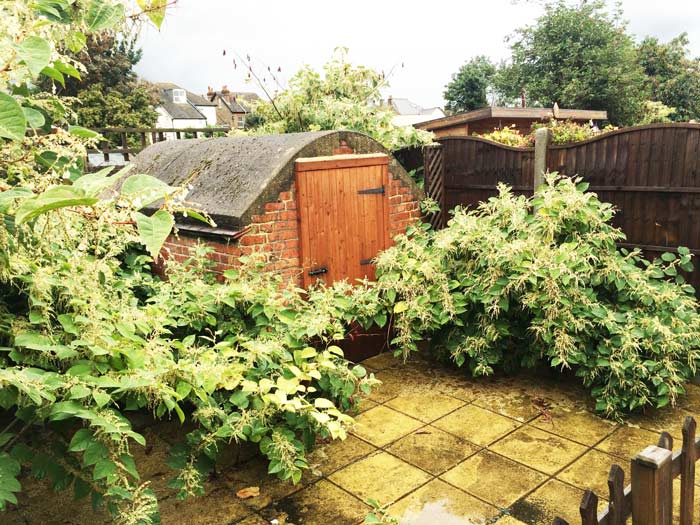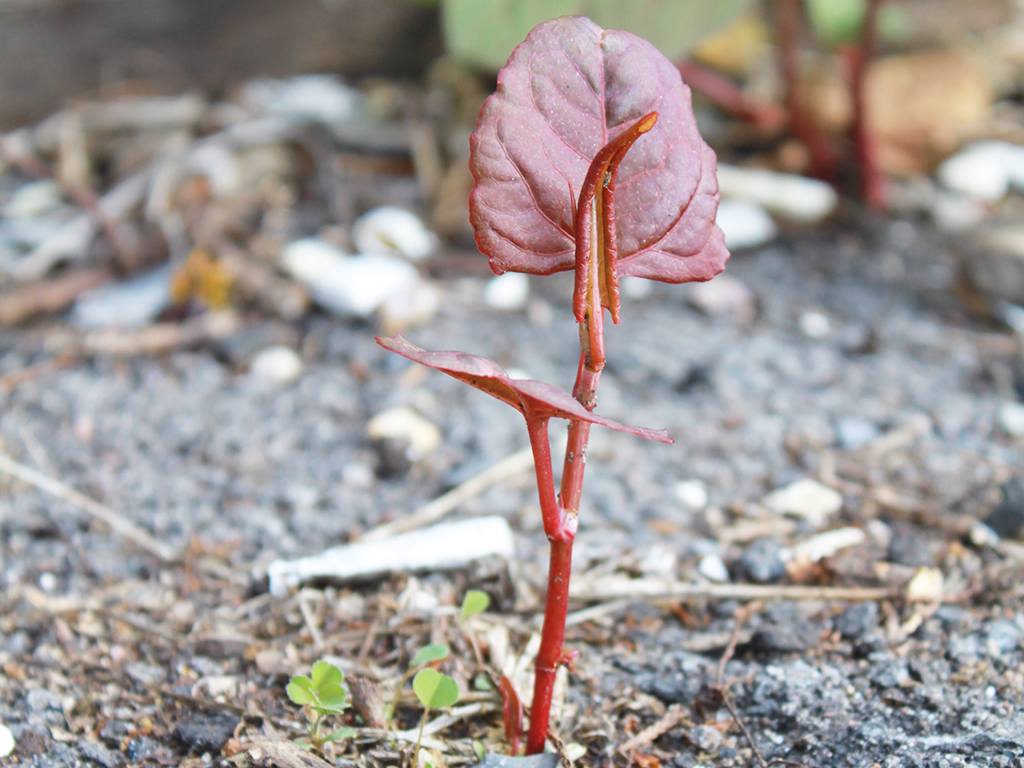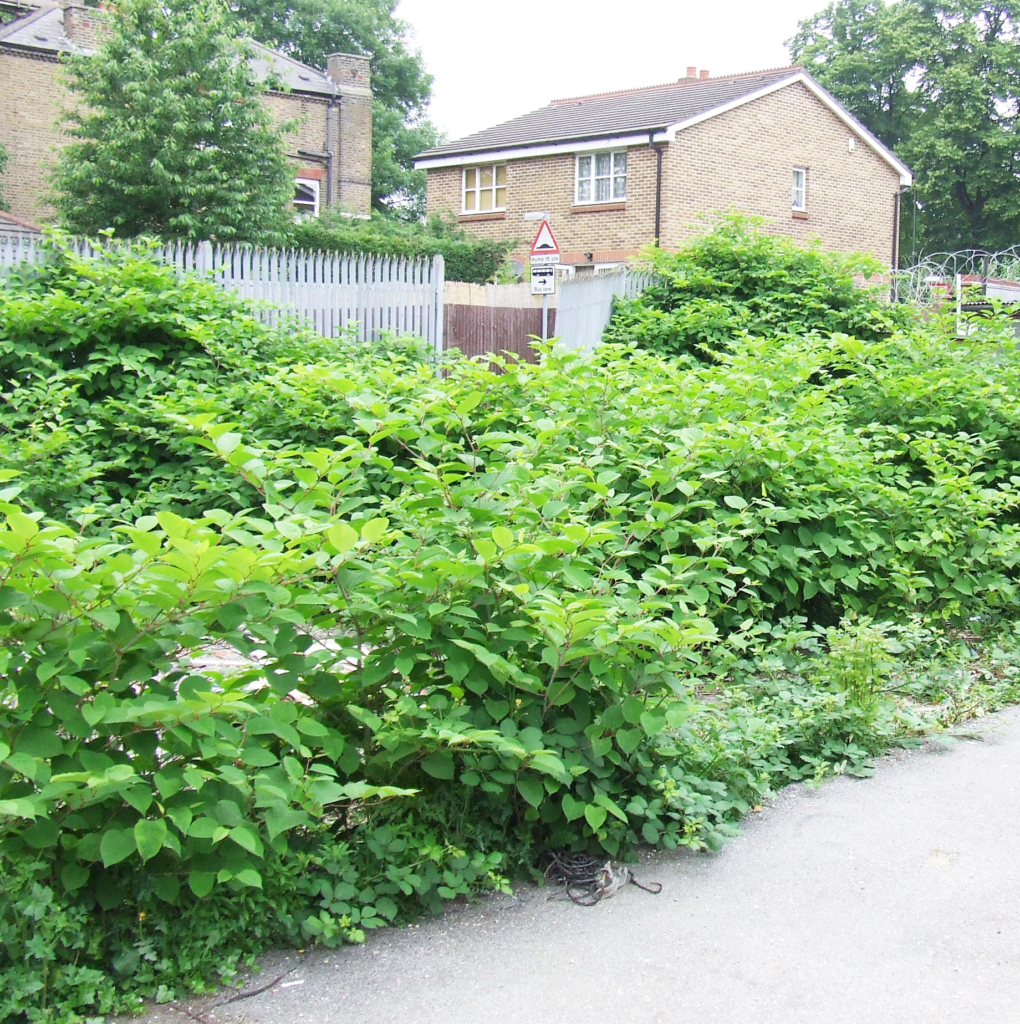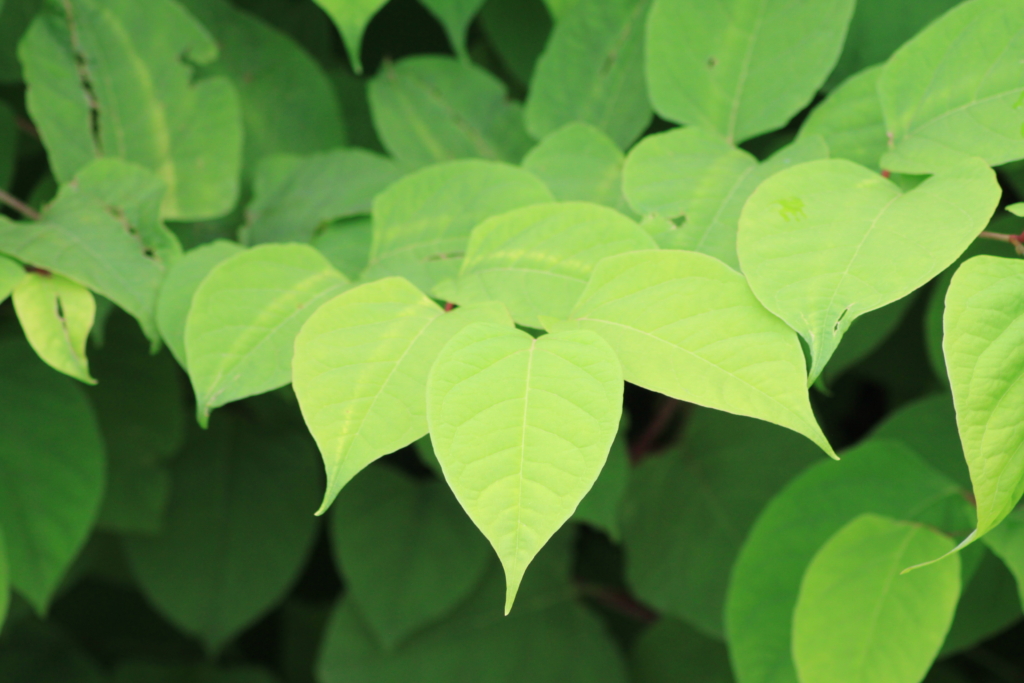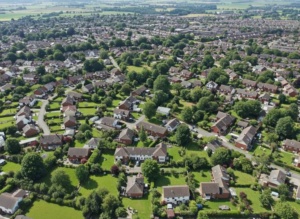How to identify Japanese knotweed
Guest post by Nic Seal, Founder and MD of Environet
Japanese Knotweed is number one on the Environment Agency’s list of the UK’s most invasive plant species.
If it’s growing on land you’re buying, or selling, with the right help it can be treated, backed by guarantees that can satisfy most mortgage lenders.
But it’s really important to know what to look out for so that you can get the right checks before you buy or sell a home which has the plant growing in the garden, or within 3 metres of the property boundaries.
What is Japanese knotweed?
Hailing from the volcanic slopes of Nagasaki in Japan, knotweed arrived in the UK in 1850 in a collection of samples sent to Kew Gardens. It was favoured by the Victorians as an ornamental plant and has since become established in the UK.
Japanese knotweed spreads through its powerful underground root system, pushing up through asphalt, cracks in concrete, drains, and even the cavity walls of our homes in search of light and water.
What does Japanese knotweed look like?
Red or purple asparagus-like spears emerge from the ground in early spring and as they grow, bright green heart or shield-shaped leaves unfurl in a zig zag stem pattern.
As the plant reaches full height of up to three metres in summer, the canes harden and become bamboo-like with distinctive purple-flecks.
Knotweed flowers in late summer, when clusters of pretty creamy-white flowers emerge.
In autumn the leaves turn yellow and eventually fall to the ground as knotweed enters its winter hibernation period. The stems by now are brittle and dead-looking but beneath the ground, the plant is very much alive and waiting to re-emerge next spring.
What should I do if I discover knotweed on my property?
If you discover knotweed on your land and you decide to leave it, you’re not breaking the law. It’s not a notifiable weed either, so you don’t need to report it to the authorities.
However, you do have a legal obligation to prevent knotweed from spreading to neighbouring properties, and failure to do so could result in legal action under ‘Private Nuisance’ legislation.
If you decide to sell your property, you will need evidence of a professional Knotweed Management Plan backed by an insurance-backed guarantee.
How do I treat Japanese knotweed?
After you’ve identified Japanese knotweed on your property, dealing with it as quickly as possible is the best course of action. A well-established knotweed infestation will be more expensive to treat or remove, and the risk of encroachment to a neighbouring property becomes higher, which could land you with an expensive legal bill.
There are several methods of dealing with it, the least expensive being herbicide treatment, over two to three years.
Increasingly, homeowners are opting to have the knotweed physically dug out of the ground, with all viable rhizome roots sifted and removed from the infected soil. This environmentally-friendly method can be carried out within a few days, at any time of year – and it’s an instant fix.
Can I sell a property with knotweed?
Home-sellers are obliged to answer truthfully to a direct question relating to Japanese knotweed on the TA6 Property Information form, completed as part of the conveyancing process. And failure to do so could lead to a very unpleasant and expensive misrepresentation claim further down the line.
If you’re selling your home, you have to be certain that no knotweed rhizome is present, including beneath the ground and within three metres of the boundary, in order to respond “No” to the Japanese knotweed question on the TA6 form.
If you’re unsure whether knotweed is present, you could commission a survey to find out.
Then, if knotweed is found, you can put a professional treatment plan in place before marketing the property.
It might be tempting to try and treat the knotweed yourself, but this is unlikely to be successful and will make professional treatment afterwards more difficult.
Be upfront and honest with potential buyers from the start, providing copies of the paperwork including an insurance-backed guarantee which they will need to pass on to their mortgage lender.
The presence of Japanese knotweed can impact the selling price, so it’s best to get it professionally remediated with an insurance-backed guarantee.
For help and advice on dealing with Japanese knotweed, contact environetuk.com.
Images are provided courtesy of Environet.
READ MORE: Getting a mortgage on a property with Japanese knotweed
Please note: Rightmove is not authorised to give financial advice; the information and opinions provided in these articles are not intended to be financial advice and should not be relied upon when making financial decisions. Please seek advice from a specialist mortgage provider.
